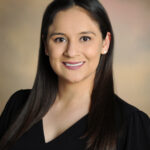Insights is a SmartBrief Education Originals column that features perspectives from noted experts and leaders in education on the hot-button issues affecting schools and districts. All contributors are selected by the SmartBrief Education editorial team.
In today’s globalized society, language plays a vital role in shaping our cultural identity and perception. As multilingualism has become an invaluable asset, dual language instruction has emerged as an effective approach, fostering academic excellence, cultural understanding and cognitive development. The increasing popularity of dual language programs in the US reflects the demands for high-quality biliteracy education.

Unlike traditional English as a second language programs, dual language instruction aims to cultivate high levels of language proficiency and literacy in both target languages by teaching in both languages throughout the school day, in every subject. To maximize the impact of dual language instruction, it is crucial to maintain authenticity, ensuring that the instruction is rooted in the rich cultural heritage and the language they represent.
Learning new languages and cultures has been a lifelong passion of mine. When I was a child, my family and I moved from Mexico to the US, where I was enrolled in an ESL program. My experiences as an emergent bilingual student, navigating a new country, not only shaped the person I am today, but it also sparked my interest in dual language education and ignited my desire to design programs that seamlessly combine fundamental language skills with cultural lessons.
Through my previous work as a teacher and now as a senior instructional design specialist at Imagine Learning, my mission is to provide more students with access to high-quality learning experiences that support the three pillars of dual language education: bilingualism and biliteracy, academic achievement and sociocultural competence.
Cognitive benefits of dual language instruction
One of the most compelling advantages of dual language instruction lies in the cognitive benefits it provides. Research consistently shows that bilingual individuals possess enhanced cognitive abilities, such as problem-solving, critical thinking and creativity. The act of switching between languages activates the brain’s executive functions, improving attention control and memory. This adaptability and open-mindedness are valuable attributes in today’s dynamic world.
Academic achievement and linguistic flexibility
Contrary to misconceptions, dual language instruction does not hinder academic progress but is associated with improved academic achievement. Students in such programs often outperform their monolingual peers in standardized tests. This success can be attributed to the transferable skills gained through language learning, which boost overall literacy and comprehension abilities. Moreover, the linguistic flexibility cultivated through this style of education allows students to adapt and learn other languages more easily in the future.
Sociocultural competence
Dual language instruction not only offers cognitive and academic benefits but also serves as a powerful tool for fostering sociocultural competence. By exposing students to diverse languages and cultures, this instruction nurtures empathy and understanding of different perspectives, essential for developing cross-cultural competence and thriving in multicultural settings. Sociocultural competency is integral to achieving fluency in a language, as language and culture are deeply interconnected. Emphasizing cultural understanding allows students to appreciate the languages they learn and the communities that speak them on a much deeper level.
Maintaining authenticity in dual language education
To fully harness the potential of dual language education, it is crucial to keep the programs linguistically and culturally responsive. Authenticity goes beyond teaching the language; it involves immersing students in the culture associated with the language. For instance, incorporating cultural lessons, literature, music and art from the native-speaking regions enriches the learning experience. Understanding colloquial language, idiomatic expressions and cultural norms are equally important aspects of authenticity.
Parent and community involvement
Parent and community involvement are essential for the success of dual language programs. Engaging parents in the language learning journey of their children strengthens the home-school connection and reinforces language skills outside the classroom. Schools can encourage parents to participate in cultural events and language workshops, volunteer to read a book in their children’s classroom, and participate in language immersion opportunities to promote language use beyond the school setting.
Leveraging technology
Technology can be a valuable tool in dual language programs, especially if the technology creates individual learning pathways for students. In these programs, every student experiences a unique language development journey. The goal is to achieve high levels of language proficiency and literacy in both languages. Technology allows students to have individual learning time that meets them where they are in their language development progress.
Some programs offer immediate feedback so students can understand what went wrong (or right) without waiting for a teacher to grade their work. Based on the feedback students receive, programs can flag students who might need extra assistance from their teacher or need more challenging work to continue advancing. Incorporating computer games in the classroom can also make the lesson more exciting and reach students who struggle to engage with typical instruction. Tech programs and apps are a beneficial addition to dual language instruction as long as these programs are linguistically and culturally responsive.
Addressing misconceptions
Despite the numerous benefits and growing popularity of dual language programs, there are still misconceptions about them. Some people mistakenly assume that dual language programs are simply translations from English to the second language or similar to ESL programs. However, it is important that educators and stakeholders work together to dispel these misconceptions and advocate for authentic dual language education.
I encourage schools that do not yet have a dual language program to consider starting one, as the benefits for students are notable. Dual language instruction offers numerous benefits beyond language acquisition. It nurtures cognitive abilities, academic achievement and cultural understanding while fostering an appreciation for diversity and a sense of belonging.
By keeping dual language instruction authentic and culturally responsive, we can cultivate a generation of global citizens who can navigate an interconnected world with empathy and respect for all cultures. Embracing linguistic and cultural diversity is not only an educational imperative but also a celebration of our shared humanity.
Mayra Ordonez Dominguez is a senior instructional design specialist at Imagine Learning. Prior to joining Imagine Learning, she served as a dual language teacher, a bilingual curriculum writer and a professional development specialist. In her current role, Mayra collaborates with field experts to design authentic and engaging learning experiences tailored to meet the needs of emergent bilingual students.
Opinions expressed by SmartBrief contributors are their own.
_________________________
Subscribe to SmartBrief’s FREE email ASCD newsletter to see the latest hot topics in education. It’s among SmartBrief’s more than 250 industry-focused newsletters.
